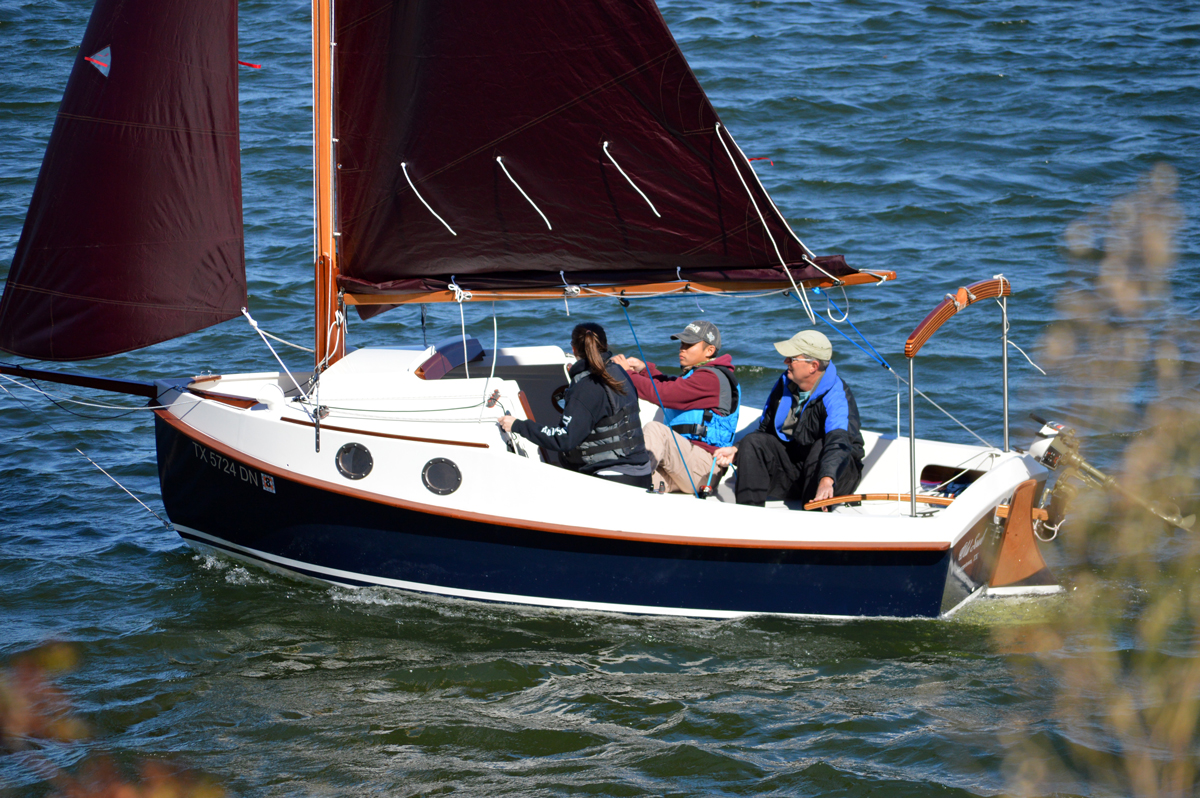 |
| Gluing Up the Keel Blocking |
It's a little hard to see, but here I am gluing in the blocking that goes between the two sides of the keel. (Again, no effort was made to keep the shot level--just to include everything as much as possible.) The keel is hollow because lead will be poured into sections of it to add stability. 92 pounds of lead will go into the compartment just behind the centerboard trunk. The opening for this is just in front of the cans of liquid that are weighing down the vertical blocking. The vertical blocking, besides being a structural component, is used to help contain the lead.
No lead will be added to the rear section (behind the vertical blocking) to maintain proper balance fore and aft. There will be another 15 1/2 pounds of lead ballast added to the section just behind the noseblock and in front of the centerboard trunk. You can see this better in the picture of the noseblock being glued in place below. Another 160 pounds of lead shot will be added later beneath the floorboards for a total of about 268 pounds of ballast. This makes the PocketShip a very stable boat for its size and, according to the designer, capsize-proof. The boat can be knocked down by an eight-foot or higher wave (not likely inland) but the ballast provides enough moment to make the boat self-righting, providing the hatch is closed and the cuddy (tiny cabin) is not flooded.
While also on the subject of safety, the boat is also supposed to be "unsinkable," barring a disaster that tears it apart. The flotation chambers are filled with closed-cell foam (unlike the Titanic). There is a big chamber in the nose, and more along the sides and under the cockpit.
The other thing I did today was to glue the noseblock to one side of the keel.
 |
| Gluing Noseblock to Starboard Side of Keel. |
You can see the small area that will contain more lead ballast just behind the noseblock and in front of the centerboard trunk. Hard to believe this small space will hold 15 1/2 pounds of lead. Shows how heavy that stuff really is.
Also note the small 3/8" diameter rod in the centerboard pivot hole. It is there to make sure the holes are all perfectly aligned.

No comments:
Post a Comment